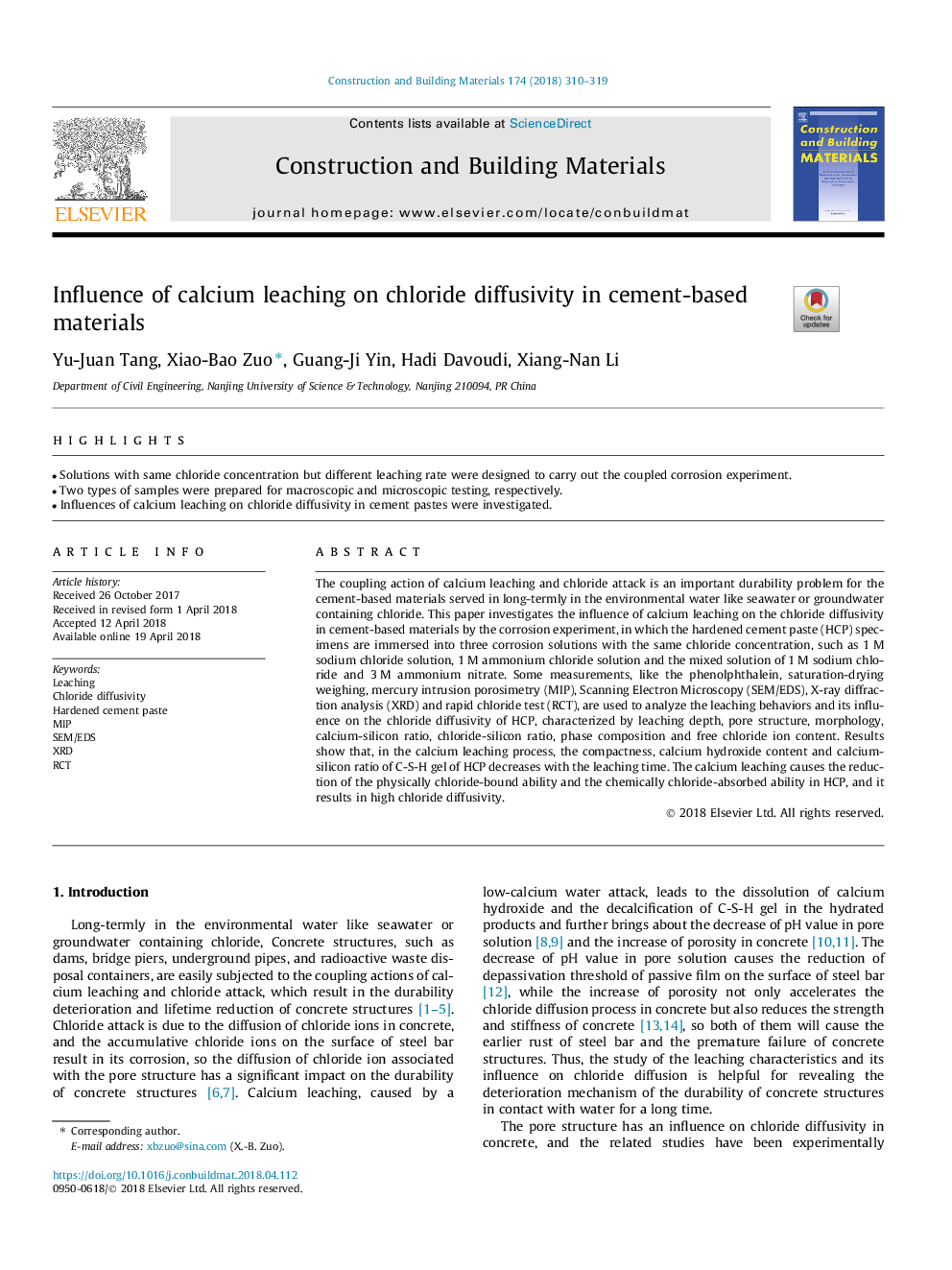| Article ID | Journal | Published Year | Pages | File Type |
|---|---|---|---|---|
| 6713472 | Construction and Building Materials | 2018 | 10 Pages |
Abstract
The coupling action of calcium leaching and chloride attack is an important durability problem for the cement-based materials served in long-termly in the environmental water like seawater or groundwater containing chloride. This paper investigates the influence of calcium leaching on the chloride diffusivity in cement-based materials by the corrosion experiment, in which the hardened cement paste (HCP) specimens are immersed into three corrosion solutions with the same chloride concentration, such as 1â¯M sodium chloride solution, 1â¯M ammonium chloride solution and the mixed solution of 1â¯M sodium chloride and 3â¯M ammonium nitrate. Some measurements, like the phenolphthalein, saturation-drying weighing, mercury intrusion porosimetry (MIP), Scanning Electron Microscopy (SEM/EDS), X-ray diffraction analysis (XRD) and rapid chloride test (RCT), are used to analyze the leaching behaviors and its influence on the chloride diffusivity of HCP, characterized by leaching depth, pore structure, morphology, calcium-silicon ratio, chloride-silicon ratio, phase composition and free chloride ion content. Results show that, in the calcium leaching process, the compactness, calcium hydroxide content and calcium-silicon ratio of C-S-H gel of HCP decreases with the leaching time. The calcium leaching causes the reduction of the physically chloride-bound ability and the chemically chloride-absorbed ability in HCP, and it results in high chloride diffusivity.
Related Topics
Physical Sciences and Engineering
Engineering
Civil and Structural Engineering
Authors
Yu-Juan Tang, Xiao-Bao Zuo, Guang-Ji Yin, Hadi Davoudi, Xiang-Nan Li,
